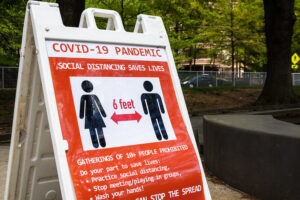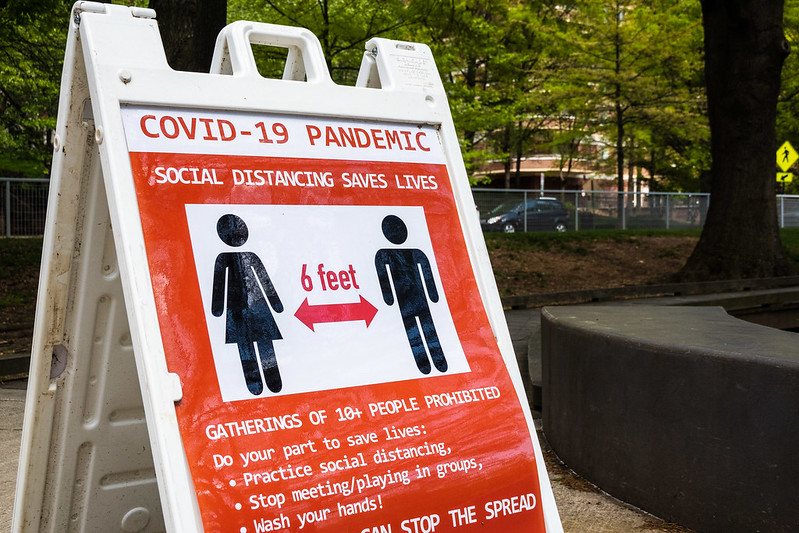Schools closed in March in order to give federal and state governments the time to implement a public health response to COVID-19. They have failed miserably to do so. With case counts exceeding three million and deaths approaching 150,000, the United States is unique in the world for its near-total abdication of responsibility for its people in the midst of the worst global pandemic in a century. And now, in the face of rising case numbers, uncontrolled community transmission, and a culture growing increasingly numb to six-figure death rates, people are clamoring for school buildings to reopen.
This is an absurd proposition. No teacher should risk their life because the government refuses to address a solvable problem.

Arlington County (VA) signage during COVID-19 outbreak — photo via dmbosstone on Flickr
School districts’ plans for the fall are a mix of in-person, hybrid, and online learning plans —- with heated debate about which approach is best. But this debate is fundamentally misplaced: We do not have a learning problem, we have a public health problem. Schools were closed because the world confronted a lethal and highly transmissible virus with no vaccine and few effective treatments, and that problem still exists.
There was a time, back in March, when doctors and nurses across the country were forced to treat patients without adequate PPE. They protested and they complained, but the few who flat-out refused found themselves out of jobs. What would have happened if they’d all refused? How quickly would the federal government have marshalled its resources and authority to manufacture and distribute all needed PPE if medical professionals decided that without it, they would strike?
Teachers (and other school-based staff) are now facing that same question. What would happen if they simply refused to go into school buildings until the federal government created a school reopening plan aligned with CDC guidance? What if teachers only offered virtual schooling until districts committed to allowing public health experts to guide reopening decisions? Even regions where the virus appears to be “under control” for the moment are always at risk of outbreaks in a country with porous borders. Take Hawaii, for example: It is the most remote population center in the world and it cannot get its infection rates to 0. This is a national problem in need of a national response.
Schools can still plan for instruction using imperfect remote learning models, and teachers will still do their much-needed jobs. But it is time for a national teachers’ strike against in-person programming. No teacher should go back into a school building anywhere in the country until the federal government adopts a meaningful public health plan to address the real problem that we’re all facing: the unchecked spread of a deadly virus.
